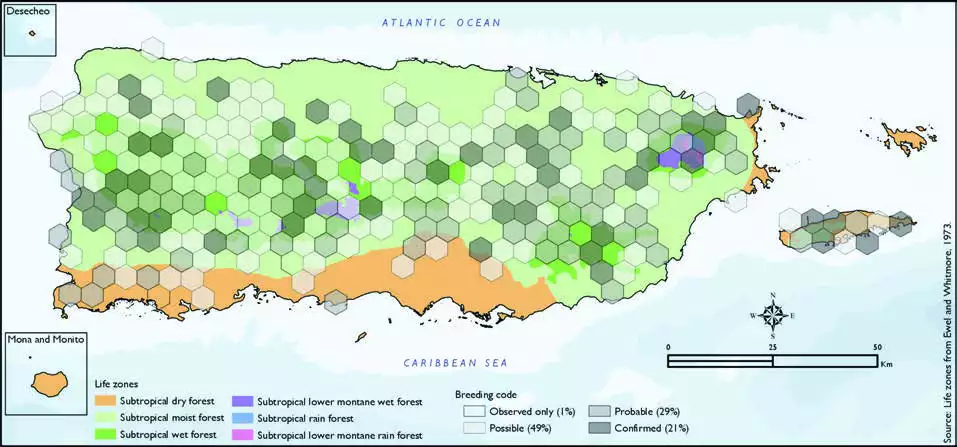Loggerhead Kingbird
Description
The loggerhead kingbird (Tyrannus caudifasciatus) is a species of bird in the family Tyrannidae.
This large kingbird measures 23 cm (9.1 in) long. It is dark grey above and white below. The head is black while the throat and cheeks are white. Like many kingbird species, the loggerhead possesses an orange or yellow crown patch, but it is well concealed and rarely visible in the field. The tail is squared and ends with a buffy-white band.
Distribution & Habitat
The Loggerhead Kingbird is common in the northern
Bahamas, the Cayman Islands,
and Greater Antilles (Raffaele
and others 1998) including
Puerto Rico (Oberle 2018) and
Vieques (Gemmill 2015). The
form on Puerto Rico and Vieques
is sufficiently distinct from other island populations; Garrido and
others (2009) recommend that
it be recognized as a separate
endemic species, which they
designate as T. taylori. However,
this taxonomic recommendation
has not been accepted by the
American Ornithologists Union
checklist committee at this time
(Chesser and others 2018). This
species habitat includes mostly
forest clearings and edges, shade
coffee plantations (Oberle 2018),
pine and broadleaf forests,
dry and wet woodlands, and
mangrove swamps (Raffaele and
others 1998). In Puerto Rico,
the Loggerhead Kingbird occurs
commonly in forest clearings
at the Maricao State Forest
(Oberle 2018), as well as in the
haystack hills of the north coast
and in lower forested areas of the Sierra de Luquillo (Raffaele
1989a, Recher and Recher 1966).
Nonetheless, it is rare in the
metropolitan area of San Juan,
but it is sporadically reported in
the karst hills between the towns
of Guaynabo and Bayamón
(Salguero and Colón 2005). The
atlas fieldwork yielded a total of
404 records within 243 hexagons
or 51 percent of the 479 total
hexagons (see map). Of the 243
hexagons where this species
was found, breeding met the
atlas definition of confirmed in
21 percent (50) of the hexagons,
probable in 29 percent (70), and
possible in 49 percent (120),
while the species was observed
in 1 percent (3) of the hexagons
but without evidence of breeding
(see map). Puerto Rican Kingbird distribution. The map shows the highest breeding code by hexagon and overlaying the ecological life zones
in Puerto Rico. Note: percentages may not total 100 due to rounding. 211Loggerhead Kingbird/Clérigo

Breeding Habits
The Puerto Rican Kingbird builds a cup-shaped nest made of
twigs, stems, and grasses, usually
in a tree or shrub (Raffaele
and others 1998). Previously
published reports indicate that
breeding occurs mostly from
February to July, but some
nesting activity has been noted
from November to January
(Raffaele and others 1998).
Nevertheless, atlas results show
that this species breeding season
extends throughout the year,
with the most breeding activity
from March to June (see chart).
The breeding activity peaks in May, and it mostly takes place in
the subtropical moist forest life
zone. Atlas results (see table)
show that this species breeds
mostly within the subtropical
moist forest life zone (59 percent
of the hexagons) but also in the
subtropical wet forest life zones
at higher elevations (32 percent
of the hexagons) and rarely in
the subtropical dry forest life
zone (9 percent of the hexagons)
(see table and map).
Conservation
The population of the Loggerhead Kingbird has not
been evaluated, but the species is described as fairly common
(Stotz and others 1996). It is
currently listed as a species
of least concern by the IUCN
(BirdLife International 2016).
Locally, this species is not
listed in any of the threatened
categories of PRDNER and
USFWS. In Puerto Rico, the
Loggerhead Kingbird has a
protected habitat in land of 15
percent or 834 km2 of the total area covered by the hexagons
where evidence of breeding
was found for this species
(5740 km2).
Related Species
Family:
flycatcher